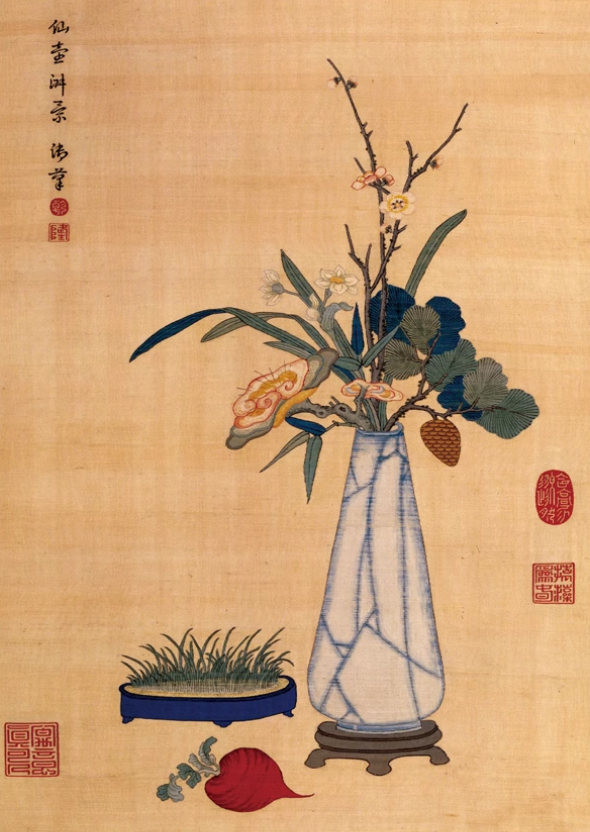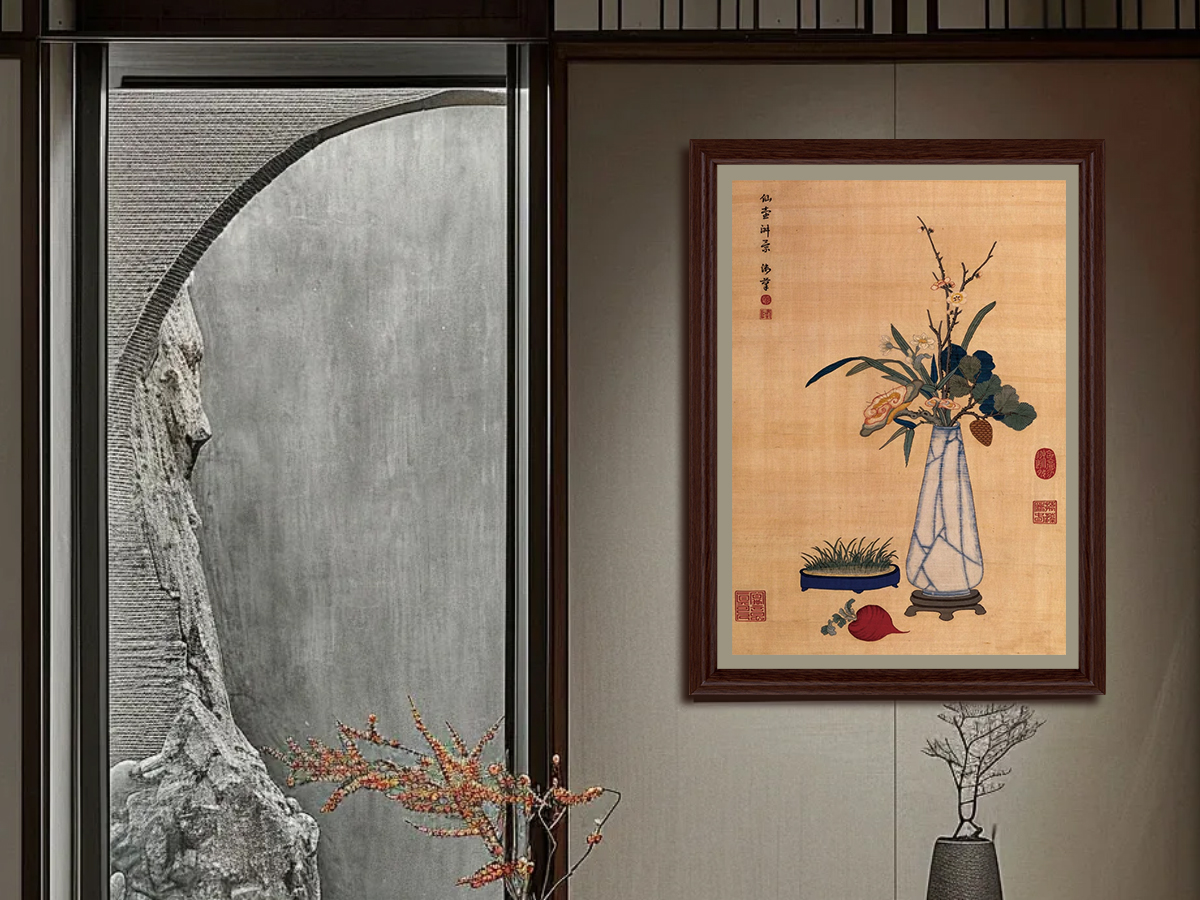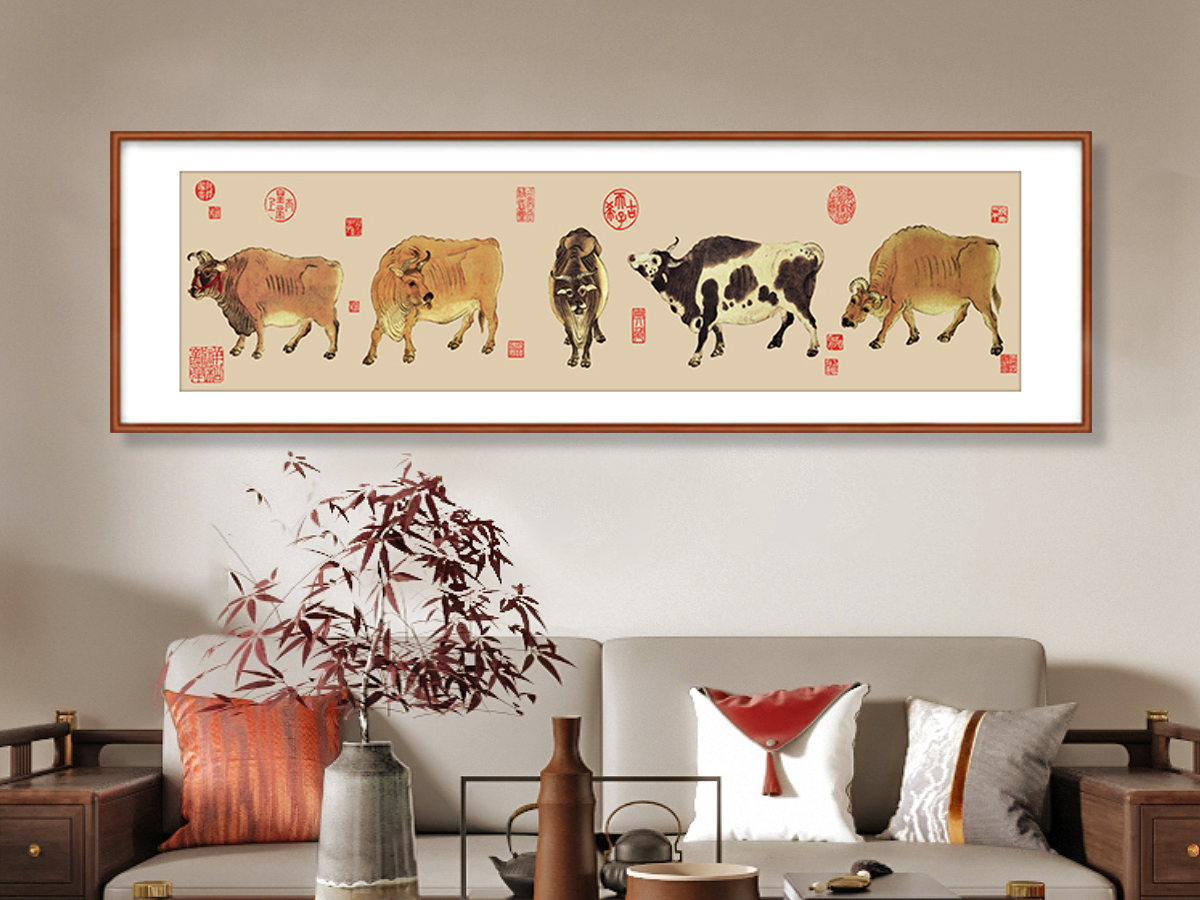A Glimpse into the Imperial Heritage
The “Xianhu Shujing” scroll, a creation of Emperor Qianlong during the Qing Dynasty, has a storied past as an old – time treasure in the Qing Palace. Measuring 82 cm in length and 36 cm in width, this original kesi painting was a work of art fit for an emperor. Kesi, a unique Chinese weaving technique, is somewhat like a sophisticated cousin to our beloved cross – stitch. It involves painstakingly interweaving threads to bring a design to life, much like the way we carefully place each cross – stitch on our fabric.
The Alluring Composition
On a soft beige backdrop, the scroll features a vase brimming with plum blossoms, narcissus, bamboo, and ganoderma lucidum. There are also fresh potted grass, radishes, and vegetables. This arrangement is no accident. “Xianhu Shujing” symbolizes the beautiful scenery of a fairy’s pot, representing good luck and celebration. When we think about creating a cross – stitch based on this, we can imagine the joy of stitching each element, just like bringing a piece of this magical scene into our own homes.

The Artistic Techniques: Kesi Meets Cross – Stitch
The kesi artisans used a combination of two – color halftone and gradation techniques, similar to how we might blend different colored threads in cross – stitch to create depth. They employed methods like plain kesi and structured kesi, comparable to the different stitches we use in cross – stitch to form patterns. Some parts of the kesi work had additional rendering and color – filling, much like when we add extra details to our cross – stitch projects. The “through – warp and broken – weft” method in kesi allows for incredibly detailed designs, and in cross – stitch, we also strive for precision to make our patterns come alive.
A Touch of Imperial Elegance
The scroll is not just a visual delight but also a historical treasure. On the left side, you’ll find the Qianlong Emperor’s calligraphy, “Fairy Vase and Auspicious Scene,” accompanied by his personal seals. These elements add a layer of imperial authority and artistic flair, making the piece a unique blend of art and history.








Leave a Reply